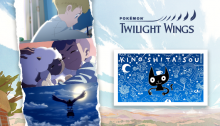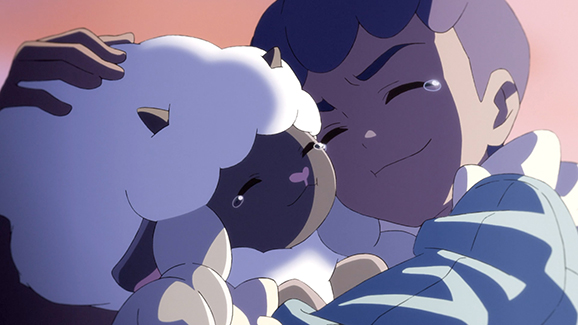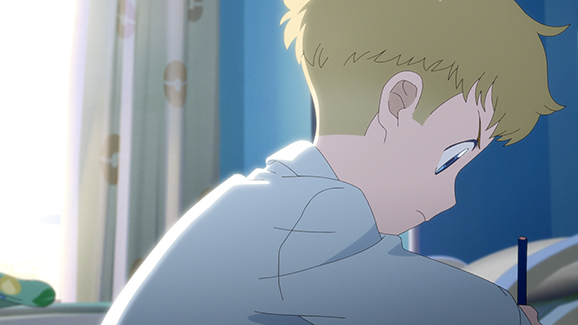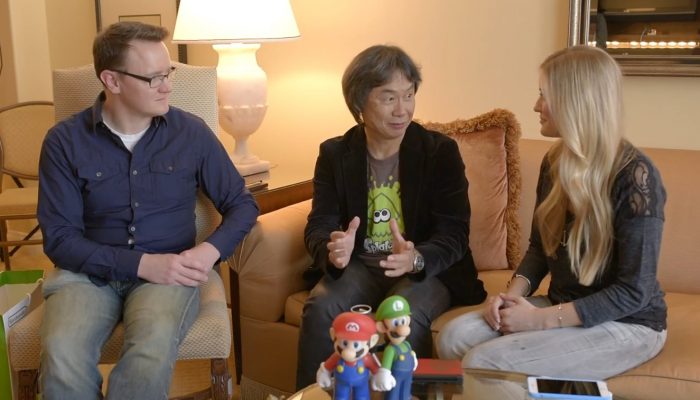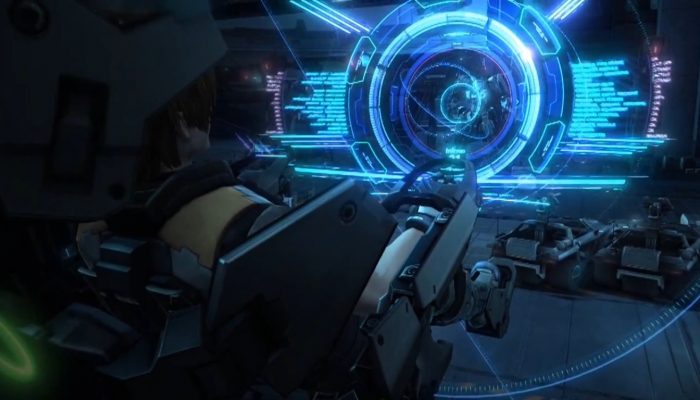 “By the way, there’s a reason his name is “John,” but it’s a secret. Tommy’s character was born from the need to have someone to help establish John’s character. Tommy has some background lore of his own, but that’s a secret, too.”
“By the way, there’s a reason his name is “John,” but it’s a secret. Tommy’s character was born from the need to have someone to help establish John’s character. Tommy has some background lore of his own, but that’s a secret, too.”
☆ NintendObs Weekly – Monday, November 16, 2020 – Sunday, November 22, 2020.
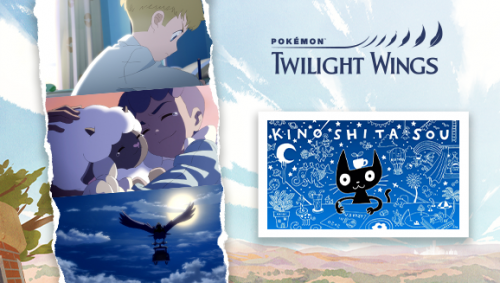
Meet Sou Kinoshita, the Screenwriter behind Pokémon: Twilight Wings
Learn about writing a compelling story in the second in our series of interviews with the creative team behind Pokémon: Twilight Wings.
November 18, 2020
For our second interview with the creators of Pokémon: Twilight Wings, we ask Sou Kinoshita, who wrote the scripts for all seven episodes, about what went on in the background during the writing process and what sentiments were imbued into the characters.
Q: I understand you took the lead on scriptwriting for Pokémon: Twilight Wings. Can you explain exactly what that entailed in the context of the production process?
A: By the time I joined the project, each episode already had a rough outline—about four lines of text. I took those outlines as a basis and wrote a proposal for the story I wanted to tell, then talked things through with the director and other staff members, and wrote the overarching plot that would be the backbone of the story. With that plot in place, I started writing the individual episode scripts. Scripts are like blueprints for the story of an animated work, but since they’re made up solely of words, I had to take care with each word I wrote, paying close attention to when and where lines were said, who said them, what they were doing at the time, and what they said. Some ideas (such as physical movements and nuances) don’t come across well in scripts, so I conveyed those ideas verbally in meetings, or else in footnotes.
Q: Twilight Wings was your first experience with writing a script, correct? Were there particular moments in the process that you struggled with, or ones that left a strong impression?
A: I’m deeply grateful to have had screenplay director Taku Kishimoto, who’s a screenwriter, help me with all the ins and outs of the process. He made time in between his own tasks to offer me advice on each episode. Plus, the director, Shingo Yamashita, and the assistant director, Yo Watanabe, are around my age, so whenever one of us would make a reference to a certain aspect of some movie or an inspiration from some comic, we’d know what each other meant right away. That made things much easier.
Q: Did you know much about Pokémon prior to this? If so, do you have any strong memories or stories of Pokémon-related moments that have stayed with you?
A: The original Pokémon animated series started airing when I was in first grade, so I’m right in the middle of the Pokémon generation. I had the first Pokémon games for Game Boy. I’ll never forget the thrill of going on an adventure through unfamiliar towns, forests, and mountains with Charmander and Pikachu. Like a lot of kids my age at the time, I was hooked on all things Pokémon, be it the video games, the TV series, the movies, the card game, or whatever else. I still remember how happy I was to get the strategy guide for the games for Christmas, and I kept a cardboard box full of treasured Pokémon Kids [a line of vinyl Pokémon figurines]. I love to draw, and I had fun drawing each of the original 151 species in order. I think I could still draw any Pokémon from the first games and from Pokémon Gold and Pokémon Silver from memory—to some degree anyway!
Also, I’ve loved insects and [other] animals ever since I was little. I liked reading encyclopedias of creatures—I had five whole books on bugs alone. Once, I discovered a weevil right near my house that I’d only ever seen before in my books, and that was a big moment for me. Being that type of kid, how could I not fall head over heels for Pokémon, where you go on an adventure filling up your Pokédex?
Q: What kinds of ideas is the title Twilight Wings meant to convey?
A: Twilight Wings is a compilation of seven short-story-style episodes, and the one element that is shared by every episode is Galar’s Flying Taxi service. Because of that, we wanted to include words related to the sky. There were a few other concepts we had in mind, some of which made it into the title and some didn’t. For example, we thought it would fit well if we could include an aspect of “dawn” to convey the idea of how John and the other characters make impactful decisions, solve problems, have realizations, and draw on their bravery to take action. We also thought of how we all have troubles to bear in life, and sometimes we get caught in a frighteningly dark, long night—and how wonderful it would feel if light finally crept in, and you could finally open your eyes to a wide blue sky and take off flying into that sky on your own wings. The title has been translated into several different languages for worldwide distribution, too, and I think the English name, Twilight Wings, has a nice ring to it as well.*
*Note: The Japanese word translated as “Twilight” is more closely associated with dawn than the English.

Q: Since John and Tommy are original characters, I imagine you had to build up everything from square one—like their background and the ways they think and speak. What was on your mind as you wrote their stories?
A: Before I ever saw the proposed episode outlines, I thought up some Pokémon-related short stories that I’d write if I could do anything I wanted. For example:
- On summer vacation, a young boy from the city—an only child—gets left at his grandma’s house in the country on his own. He runs into a Pikachu in a thicket in her backyard and chases after it, going deeper into the yard. There, he finds a community of wild Pokémon, which he begins to explore. When the boy tells his parents about the experience, they remember how they once chased a Pikachu into the woods out behind that house, too.
- A lonely, stubborn elderly person who loves gardening and teatime one day finds that part of their beautifully kept garden has been destroyed. There, they find an injured Pokémon. The story follows the quiet exchange of feelings between the elderly person and the Pokémon.
- A young man who’s a traveling juggler befriends a Pokémon he meets on a visit to an unfamiliar town and tries to teach the Pokémon his craft. But his uncoordinated new partner can’t juggle at all. Instead, the man discovers a certain talent in his partner Pokémon. The pair plans to put on a small show, but will it succeed?
Those were the kinds of ideas I had for these types of five-minute Pokémon vignettes. The first one I thought of was about a young boy who was a shut-in.
This boy almost never leaves his room, but he’s been remotely helping raise and trade hundreds of Pokémon over the internet. He’s incredibly knowledgeable about Pokémon, and lots of Trainers come to him online for answers and advice. One day, someone asks him: “What kinds of Pokémon are you raising when you’re not online?” The boy suddenly becomes acutely aware of the fact that he’s never caught a single Pokémon in the real world. He gathers his courage, and with a Poké Ball gripped in his trembling right hand, he walks into some tall grass near his house.
I didn’t realize until later that some part of that shut-in boy may have carried over into John in Twilight Wings. By the way, there’s a reason his name is “John,” but it’s a secret. Tommy’s character was born from the need to have someone to help establish John’s character. Tommy has some background lore of his own, but that’s a secret, too.
Q: The Pokémon in this series are all portrayed in detail as real thinking beings, and each one is extremely interesting. What did you focus on or take extra care with when it came to the Pokémon?
A: I think the Pokémon’s detailed portrayals are probably thanks to the skills of the directors and animators, but since I’ve always loved Pokémon and animals, I felt writing scenes with Pokémon in the script went even more smoothly than writing ones with people. From the start, when I was thinking about a collection of Pokémon vignettes, I wanted to tell one story from the perspective of a Pokémon. I love features that are told from Pokémon’s points of view without people present, such as Pikachu’s Vacation* and various illustrations you sometimes see at the end of TV episodes. So when I received the outlines, there was one episode in which a Wooloo ran away from home, and I knew I wanted to write an episode with that kind of feel. There were problems of scale involved, but I wish I could have gotten to write the action as seen through Wooloo’s eyes even more deliberately.
*A short animation that played in theaters in 1998
Q: Were there any characters or Pokémon that you grew fonder of, or maybe came to struggle with, as you wrote the script? If so, can you tell us why?
A: I’ve got a lot of affection for John, since he’s one of the original characters. When I saw a feature on Penguin Highway* in the theater, I knew I wanted to make something together with the people behind it. I sent a kind of mockup original script to Studio Colorido, and that eventually led to me getting to work on the script for Twilight Wings. I think there’s a bit of me in John, especially in the way he wants to see Leon’s match so badly that he writes his letter despite Tommy’s teasing and dashes up the stairs desperately gripping his letter so he can deliver it to Rose.
*A 2018 animated movie made by Studio Colorido
Q: Can you tell us about any highlights you’re looking forward to from what’s to come?
A: The final episode delivers on what was set up way back in the first one, and it is the culmination of all the others as well, so I think it might be even more enjoyable if you watch the series through again from the beginning before the last episode. Maybe the characters you’re hoping to see will show up in the final one! I haven’t seen the completed episode yet myself, but I’m sure it will be fun. I look forward to seeing the genius camera work of the director, Mr. Yamashita.
Q: Lastly, is there anything you’d like to say to fans of Twilight Wings and of Pokémon as a whole?
A: Even though Twilight Wings is a web series with episodes that are mostly about five minutes long, it contains Studio Colorido’s beautiful imagery, the delicate touches of each episode’s directors, and stellar music and voice work, so for just a moment, it can give you the same emotional uplift that you get when you finish watching a full movie. So for those of you who can watch YouTube videos on a TV or other large screen, I absolutely recommend that you try viewing it on a display bigger than a smartphone. Also, if any of you have seen and enjoyed Twilight Wings, I’d love to hear what you thought through my homepage, Twitter, or Instagram.
About Sou Kinoshita
Sou Kinoshita is a Japanese comic artist, illustrator, and screenwriter who was born in 1990 and hails from Kanagawa Prefecture.
Kinoshita posts original comics on his website, AOISARU. Pokémon: Twilight Wings marks his screenwriting debut.
About Studio Colorido
Studio Colorido is the Japan-based animation studio behind Twilight Wings.
The studio aims to advance their digital artwork through creating full-length movie features, but also establish a leading position in commercials and short films as they take on the challenge of spurring new demand for animation. Their first full-length animated movie Penguin Highway, released in 2018, received an Award of Excellence in the animation category of the 42nd Japan Academy Film Prize awards. Their second full-length feature, A Whisker Away, is available now.
— Pokémon News
Source: Pokémon.
At NintendObserver, the comments are on Discord.
Click on Community to learn more. 🙂
…
…Wanna play? Buy a Switch.
And if you’ve already got yours, click on Pokémon for everything you need to know about the franchise. 😀
